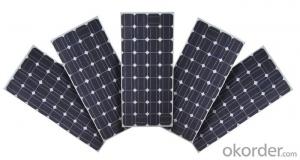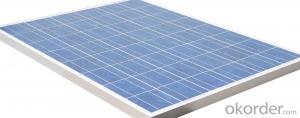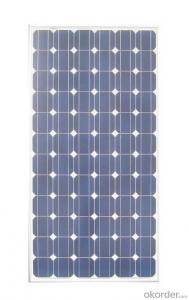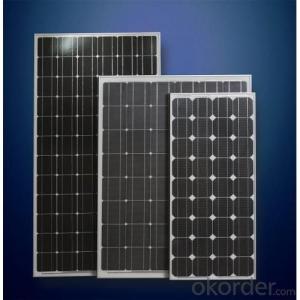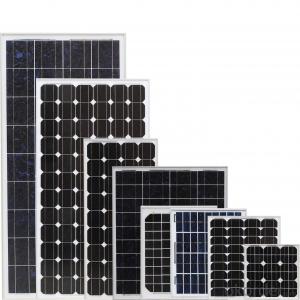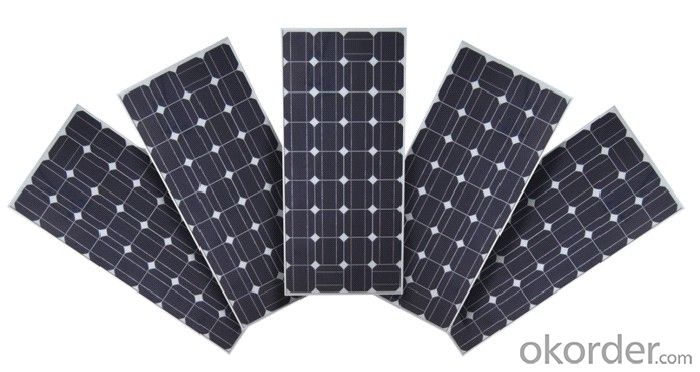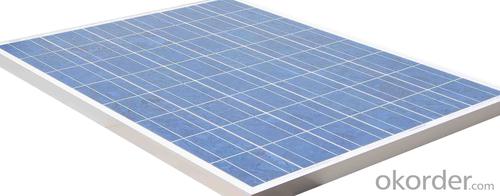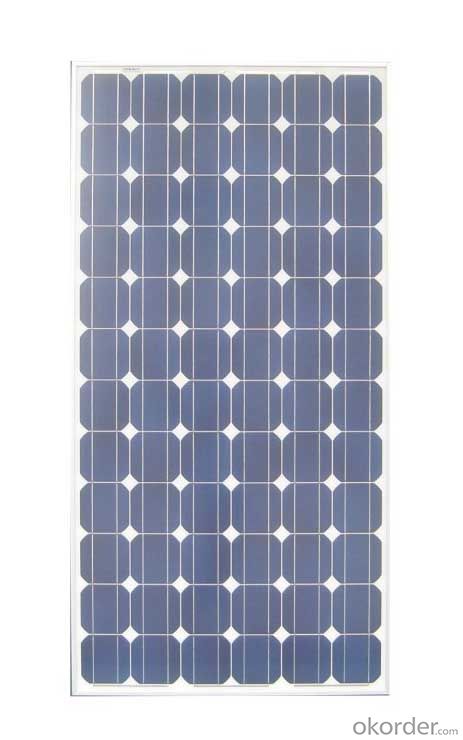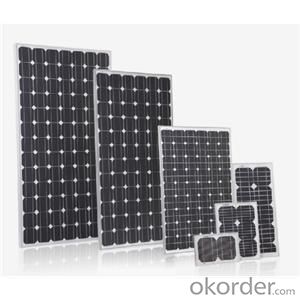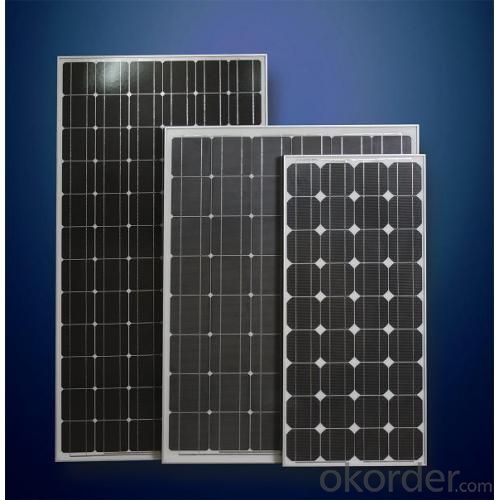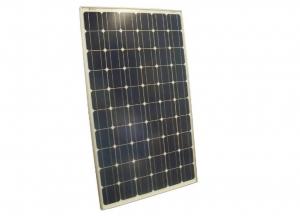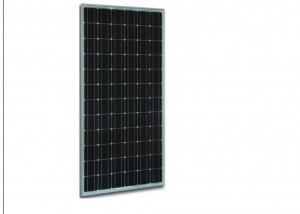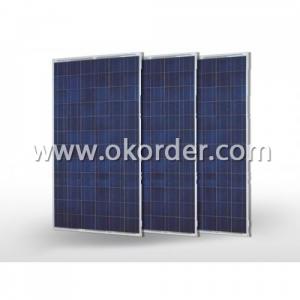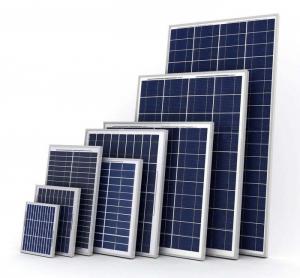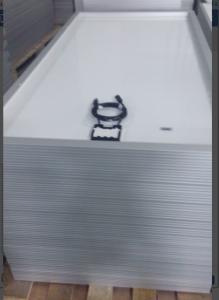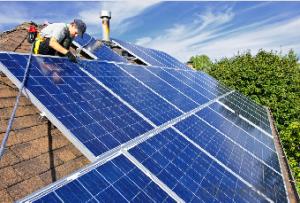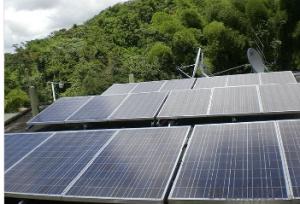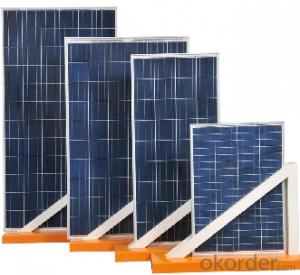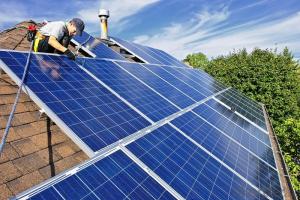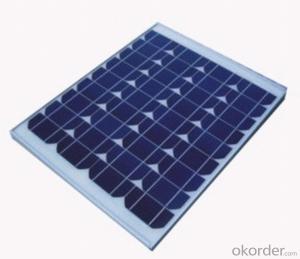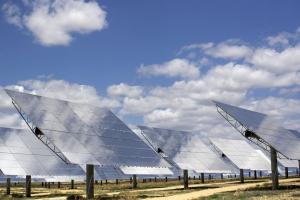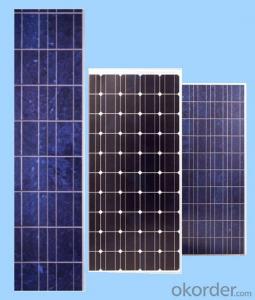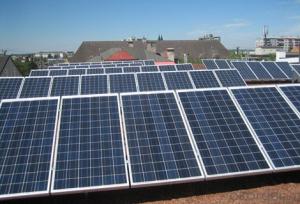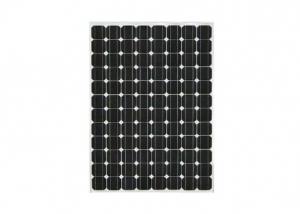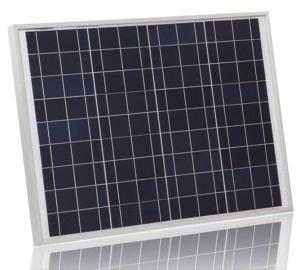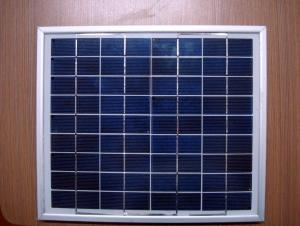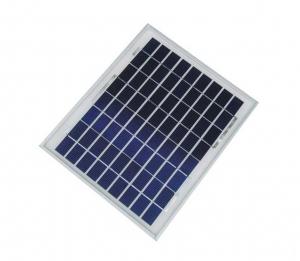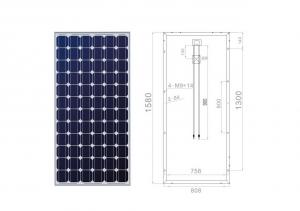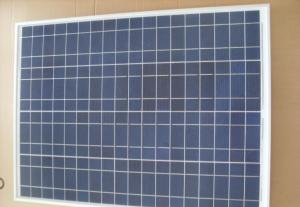Recycle Solar Panels - Solar Modules PV Cells Panel Solar Panel in 100
- Loading Port:
- China Main Port
- Payment Terms:
- TT or LC
- Min Order Qty:
- -
- Supply Capability:
- 10000000 watt/month
OKorder Service Pledge
OKorder Financial Service
You Might Also Like
1.Structure of Solar Module Description
Solar modules, which are widely used in ground mounted utility-scale PV plants, large-scale and small civil and commercial power generating system such as BIPV combined to the grid, roof-mounted PV power system, rural electrification, communications, emergency auxiliary power. NEXTECK, as one of the solar module supplier, has the capability to offer a wide range of advanced, high performance solar modules with integrated high efficiency. Energy efficient and cost effective Mono crystalline and Polycrystalline, amorphous silicon and CIGS thin film solar cells are available. We have the right products for different applications.
2.Main Features of the Solar Module
Quick Details
| Place of Origin: | Zhejiang China (Mainland) | Brand Name: | Perlight | Model Number: | PLM-240P-60 |
| Material: | Monocrystalline Silicon | Size: | 1650*992*40mm | Number of Cells: | 60 |
| Max. Power: | 260 | Color: | Silver,Black | Quality Certifications: | PID Free, Salt Mist,Fire Test and Ammonia Gas certifications |
| International Certifications: | TUV,MCS,UL,CEC and J-pec | OME/ODM: | Yes | Solar Cells Efficiency: | 17.2% |
| Solar Panels Efficiency: | 15.3% |
Packaging & Delivery
| Packaging Detail: | Carton boxes with pallets and air bags |
| Delivery Detail: | within 15 days after arrival of the 20% TT in advance |
3.Solar Module Images
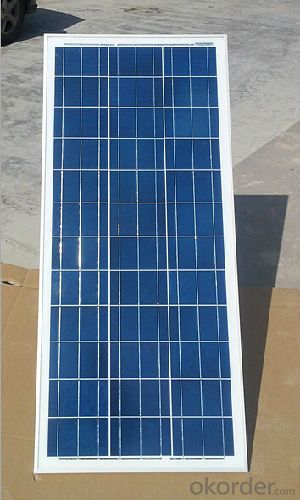

4.Solar Module Specification
Specifications
-PID Free,Salt Mist, andAmmonia gas Certifications
-Higher Efficiecny Solar Cells;
-More cost effective;
-25 years guarantee.
Product Description
High efficiency mono crystalline solar panel PLM-240P-60 series
Anti-reflective coating: AR used reduce the reflectivity enhance transmittance.
Tempered Glass: Low Iron and AR coating glass increase the power output and mechanical strength of solar module. Mechanical load ≥2400Pa , transmittance ≥91.6%
EVA: Transmittance ≥91% , Adhesive Capacity >85%
Cell: 17.9% of high efficiency solar cells to sure 15.3% module efficiency
Back sheet: Using higher quality back sheet to prevent destroying and water , it’s reflectivity ≥87%, peeling strength ≥ 40N/cm.
Aluminum Frame: Anodized aluminum alloy to effectively improve the corrosion resistance and strengt.
Certification:
![]()
Power range:220w-270w
| Module | PLM-235P-60 | PLM-240P-60 | PLM-245P-60 | PLM-250P-60 | PLM-255P-60 | PLM-260P-60 |
| Pm | 235 | 240 | 245 | 250 | 255 | 260 |
| Vmp | 30.64 | 30.89 | 31.29 | 31.73 | 31.92 | 32.1 |
| Imp | 7.67 | 7.77 | 7.83 | 7.88 | 7.96 | 8.1 |
| Voc | 37.18 | 37.35 | 37.42 | 37.58 | 37.73 | 37.92 |
| Isc | 8.34 | 8.38 | 8.45 | 8.49 | 8.52 | 8.64 |
Maxium system voltage 1000VDC
STC:Irradiance 1000W/m², Temperature 25°c,AM=1.5
Mechanical Characteristics:
| Cells size(mm) | 156X156 |
| Modules size(mm) | 1650X992X46 |
| No. of cells | 60(6X10) |
| Weight(KG) | 19.6 |
| No.of mounting holes | 8 |
| No.of waterspout | 16 |
Packaging & Shipping
Package Information:
| Type | Frame | PCS/Pallet | Pallets/Container | PCS/Container |
| 40HQ 1650X992 156P 60cells | 40/46 | 23 | 28 | 784/700 |
Our Services
Product Wattanty:
10 years for the workmanship
12 years power output no less than 90%
25 years power output no less than 80%
5.FAQ of Solar Module
1. Q: Do you have your own factory?
A: Yes, we have. Our factory located in Jiangyin city, jiangsu province.
2. Q: How can I visit your factory?
A: Before you take off from your country, please let us know. We will show you the way,or arrange time to pick you up if possible.
3. Q: Do you provide free sample?
A: Usually we do not offer free sample
4. Q: Could you print our company LOGO on the nameplate and package?
A: Yes, we can do that.
5. Q: Do you accept custom design on size?
A: Yes, if the size is reasonable.
- Q: Can solar panels be used for powering construction sites?
- Yes, solar panels can be used to power construction sites. They can provide a sustainable and renewable source of energy, reducing reliance on traditional power sources and minimizing environmental impact. Solar panels can be installed on rooftops, scaffolding, or ground-mounted systems to generate electricity for various construction activities, including powering tools, lighting, and other equipment required on-site.
- Q: we are planing to move out of the grid. we need to operate constantly 2 laptops online - does any one can tell us how much solar panels we shall need to make sure of that?
- Are you going to have anything else on electric? Water heater, Stove, Refrigerator, Dishwasher, Washing machine, lights, fans, or a barn with lights and possible water heaters for winter? If so, you may need a lot more panels than that. We use 6.8 kW of panels in a place not known for sunny days, and do all right, but sometimes have to be careful if it is cloudy for many days in a row. You may be able to get by with about half of that if you live in a sunny, southern clime. Good luck - there are lots of non electric options for other (non-laptop) appliances, so you could cut back on other stuff as well.
- Q: Can solar panels be installed on mining or extraction sites?
- Yes, solar panels can be installed on mining or extraction sites. They provide a sustainable and renewable source of energy, reduce carbon emissions, and can offset the energy demands of these operations. Additionally, solar panels can help reduce operating costs and dependence on fossil fuels. However, specific feasibility studies and considerations are necessary to assess the site's conditions, energy requirements, and potential environmental impacts.
- Q: Can solar panels be installed on residential complexes or apartment buildings?
- Yes, solar panels can be installed on residential complexes or apartment buildings. In fact, they are increasingly being installed on such structures to harness clean and renewable energy for multiple households. The installation process typically involves placing the panels on rooftops or in open spaces within the complex, allowing residents to benefit from reduced electricity costs and a more sustainable living environment.
- Q: Can solar panels be used in areas with extreme temperatures?
- Yes, solar panels can be used in areas with extreme temperatures. However, extreme heat or cold can affect the efficiency and performance of solar panels. It is important to consider the specific temperature conditions and choose appropriate panel materials and installation methods to ensure optimal functioning in such areas.
- Q: Can solar panels be installed on convention centers or event venues?
- Yes, solar panels can be installed on convention centers or event venues. In fact, many convention centers and event venues have already embraced solar energy as a sustainable and cost-effective solution. Installing solar panels on these large rooftops can help generate clean and renewable energy, reduce electricity bills, and contribute to a greener environment.
- Q: Can solar panels be installed on a sloped roof?
- Yes, solar panels can be installed on a sloped roof. In fact, many residential and commercial buildings with sloped roofs have successfully installed solar panels to generate renewable energy. The angle of the slope can affect the efficiency of the panels, but with proper installation and positioning, solar panels can still effectively harness sunlight and produce electricity.
- Q: where can i get some solar panels for a camper trailer
- There are many suppliers for solar panels. Try camping shops, BQ or other leisure shops. Alternatively try one of the companies listed here:
- Q: How hard is it to install solar energy panels on your house? Is this a reasonable way to produce 00% of your house's energy? Is there any danger?
- Hi okorder
- Q: Can solar panels be used for powering wireless charging stations?
- Yes, solar panels can be used to power wireless charging stations. Solar panels convert sunlight into electricity, which can be utilized to charge devices wirelessly through a charging station. This makes it a sustainable and environmentally friendly option for providing power to wireless charging stations.
Send your message to us
Recycle Solar Panels - Solar Modules PV Cells Panel Solar Panel in 100
- Loading Port:
- China Main Port
- Payment Terms:
- TT or LC
- Min Order Qty:
- -
- Supply Capability:
- 10000000 watt/month
OKorder Service Pledge
OKorder Financial Service
Similar products
Hot products
Hot Searches
Related keywords
